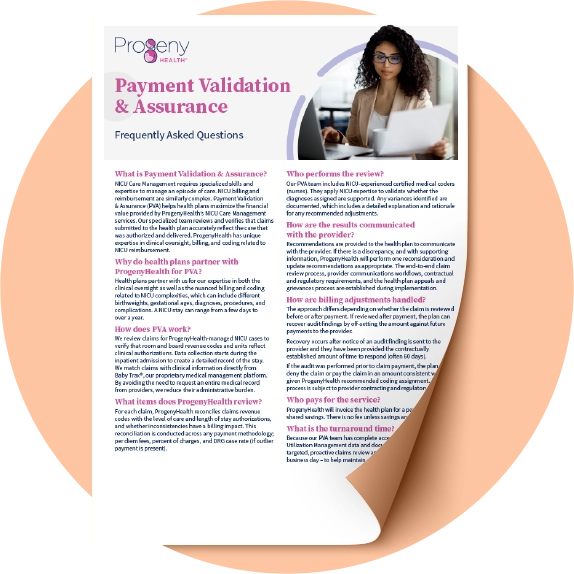 Filed Under: Health Economics | Innovation
Filed Under: Health Economics | InnovationHow Payment Validation & Assurance Delivers NICU Savings

Payment validation and integrity by the numbers
Unnecessary spending occurs in every industry and setting, especially in healthcare, where even a small percentage of inaccuracy and waste is responsible for hundreds of billions in unnecessary expenditures. These costs are driven by coding errors, mistakes in the level of care, over-prescribed treatments, inefficiency, bureaucracy, and to a lesser extent, fraud.
The impact
While no one has an exact figure, the General Accounting Office (GAO) estimated that unnecessary health spending might account for as much as 10 percent of all health care expenditures.1
In 2019, the University of Pittsburgh School of Medicine with Humana found wasted healthcare dollars between $760 billion and $935 billion. The study suggested that a quarter of all U.S. healthcare spending might be avoidable, far exceeding the GAO estimate.2
The limitations of Payment Integrity with NICU
Uncovering these lost dollars is called Payment Integrity (PI). Like all things in technology, machines excel at moving mountains of data, but come up short when judgment is required. Machine-only approaches also become less and less effective for claims that don’t present volumes of cases or follow routine patterns. The limitations of PI become most pronounced with NICU cases.
The Complexity of NICU Cases
Medically fragile newborns require expert care for blood disorders, nervous system issues, or conditions related to gastrointestinal, heart, metabolic, renal, respiratory, and more. Surgery is often necessary to correct congenital anomalies. For this reason, NICU newborns with multiple special needs require round-the-clock specialized care.
Introducing Payment Validation & Assurance
With traditional payment integrity programs, a machine sweep through the data can’t decipher the complexity of a NICU claim. NICU claims must be curated by specialists who bring the same rigor to the back end that Utilization Management (UM) experts bring to the front end of a NICU admission.

ProgenyHealth’s Payment Validation & Assurance (PVA) applies a hybrid approach that combines automated technology with a hands-on review performed by NICU clinicians. A PVA review compares the rationale for the coding against the clinical notes that form the basis of a claim. This NICU expertise can find savings that payment integrity services miss or overlook.
Clinical documentation makes the difference
ProgenyHealth’s Payment Validation & Assurance service is tightly integrated with its NICU Utilization Management program via its Baby Trax® platform. With UM and PVA under one roof, we can target clinical information from the coding process without burdening providers with documentation requests.
Capturing the mid-range
Payment Integrity programs typically target high-dollar claims, but not all NICU is high-dollar. An infant who spends seven days in the NICU might generate $50,000 in costs and not trigger the PI high-dollar threshold. ProgenyHealth’s Payment Validation & Assurance service can look at all cases and apply its clinical expertise and claims integration to capture mid-tier savings.
For example, ProgenyHealth might find $20,000 in savings in a $500,000 case or as much as $10,000 savings in a $25,000 case. Capturing $10,000 from 100 cases delivers a million dollars in savings.
Specialization and integration represent the future of payment validation
ProgenyHealth’s turnkey approach delivers access to all the clinical documentation via Baby Trax. This gives our staff with their NICU clinical backgrounds a remarkable advantage. More importantly, our NICU-specialized integrated approach represents the future of payment validation and integrity.
Read our Payment Validation and Assurance FAQ to learn how we capture savings on 20 percent to 30 percent of the NICU claims reviewed.
- www.justice.gov/archives/jm/criminal-resource-manual-976-health-care-fraud-generally
- Shrank WH, Rogstad TL, Parekh N. Waste in the US Health Care System: Estimated Costs and Potential for Savings. JAMA. 2019;322(15):1501–1509. doi:10.1001/jama.2019.13978






 Prev
Prev